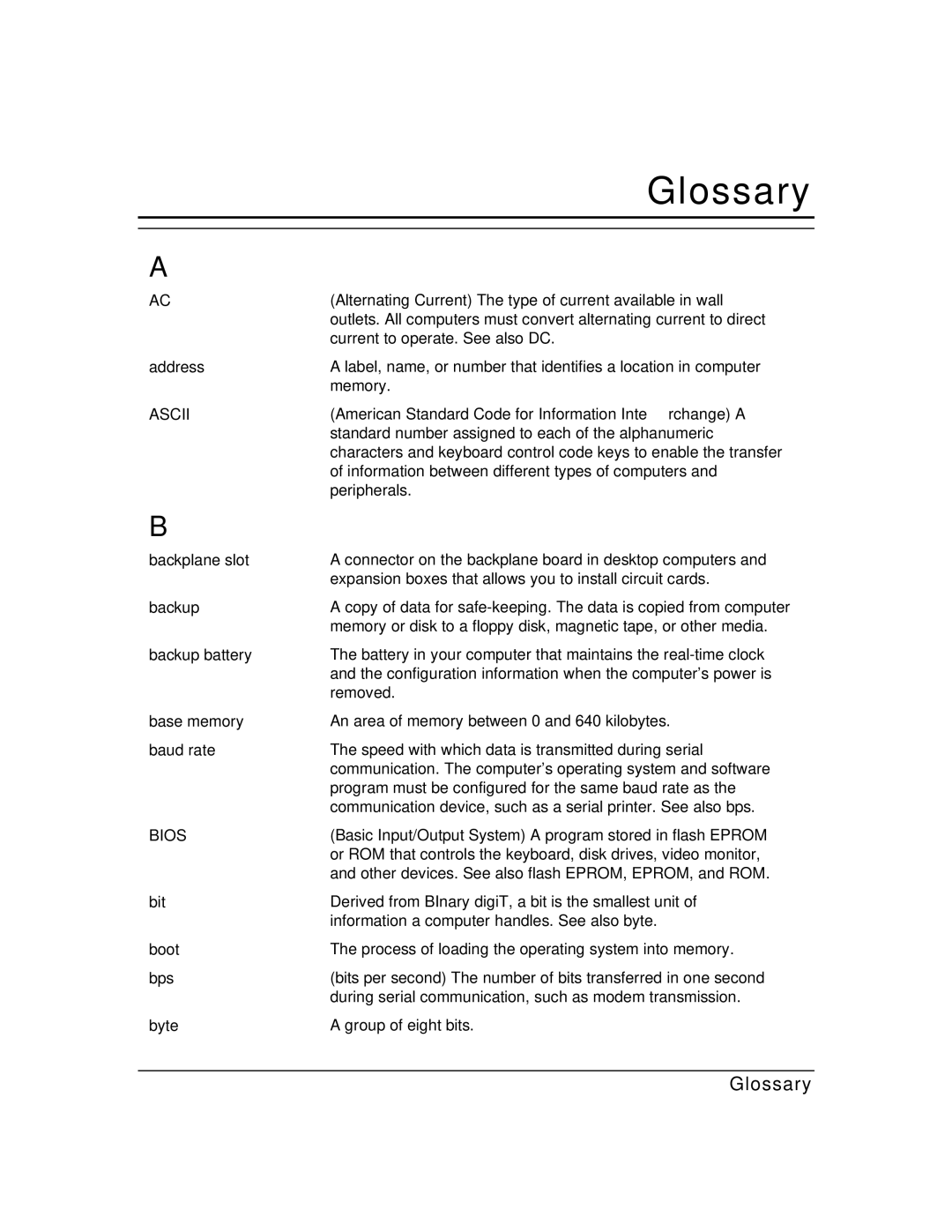| Glossary |
|
|
A |
|
AC | (Alternating Current) The type of current available in wall |
| outlets. All computers must convert alternating current to direct |
| current to operate. See also DC. |
address | A label, name, or number that identifies a location in computer |
| memory. |
ASCII | (American Standard Code for Information Interchange) A |
| standard number assigned to each of the alphanumeric |
| characters and keyboard control code keys to enable the transfer |
| of information between different types of computers and |
| peripherals. |
B |
|
backplane slot | A connector on the backplane board in desktop computers and |
| expansion boxes that allows you to install circuit cards. |
backup | A copy of data for |
| memory or disk to a floppy disk, magnetic tape, or other media. |
backup battery | The battery in your computer that maintains the |
| and the configuration information when the computer's power is |
| removed. |
base memory | An area of memory between 0 and 640 kilobytes. |
baud rate | The speed with which data is transmitted during serial |
| communication. The computer's operating system and software |
| program must be configured for the same baud rate as the |
| communication device, such as a serial printer. See also bps. |
BIOS | (Basic Input/Output System) A program stored in flash EPROM |
| or ROM that controls the keyboard, disk drives, video monitor, |
| and other devices. See also flash EPROM, EPROM, and ROM. |
bit | Derived from BInary digiT, a bit is the smallest unit of |
| information a computer handles. See also byte. |
boot | The process of loading the operating system into memory. |
bps | (bits per second) The number of bits transferred in one second |
| during serial communication, such as modem transmission. |
byte | A group of eight bits. |
